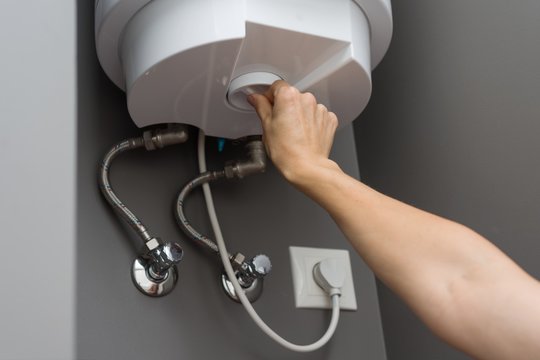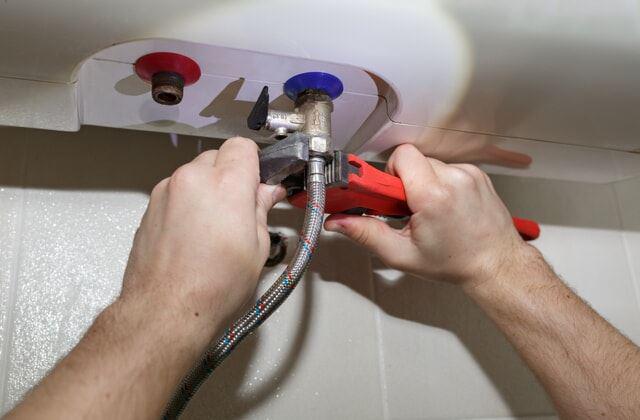How to Maintain Your Home's Hot Water System EffectivelyWays to Prolong the Life of Your Home's Hot Water System By MaintenanceImportant Maintenance Strategies for Your Home's Hot Water System
How to Maintain Your Home's Hot Water System EffectivelyWays to Prolong the Life of Your Home's Hot Water System By MaintenanceImportant Maintenance Strategies for Your Home's Hot Water System
Blog Article
We have unearthed this article relating to Tips on Maintaining a Water Heater down the page on the net and accepted it made perfect sense to write about it with you here.

Hot water is necessary for day-to-day comfort, whether it's for a rejuvenating shower or cleaning recipes. To guarantee your hot water system runs effectively and lasts much longer, regular maintenance is crucial. This short article offers functional pointers and insights on exactly how to preserve your home's warm water system to stay clear of disturbances and costly repairs.
Introduction
Preserving your home's warm water system could appear daunting, but with a few easy steps, you can guarantee it runs efficiently for several years ahead. This overview covers every little thing from recognizing your warm water system to DIY maintenance tips and knowing when to hire professional help.
Importance of Maintaining Your Warm Water System
Routine upkeep not only prolongs the lifespan of your hot water system but additionally guarantees it runs successfully. Ignoring maintenance can result in decreased efficiency, greater energy costs, and also early failure of the system.
Signs Your Warm Water System Demands Maintenance
Understanding when your hot water system needs focus can protect against significant issues. Look out for indicators such as irregular water temperature level, unusual noises from the heating unit, or rustic water.
Flushing the Hot Water Heater
Flushing your water heater gets rid of sediment buildup, enhancing effectiveness and prolonging its life.
Checking and Changing Anode Rods
Anode rods stop corrosion inside the container. Checking and replacing them when worn out is important.
Complex Concerns Needing Professional Aid
Examples consist of major leaks, electrical issues, or if your water heater is continually underperforming.
Routine Professional Upkeep Benefits
Professional upkeep can include detailed evaluations, tune-ups, and ensuring conformity with safety criteria.
Checking and Adjusting Temperature Level Setups
Changing the temperature level settings makes certain optimal performance and security.
DIY Tips for Maintenance
You can execute a number of upkeep tasks yourself to maintain your hot water system in leading condition.
Checking for Leakages
Routinely evaluate pipes and connections for leakages, as these can result in water damages and greater bills.
Comprehending Your Warm Water System
Before diving into maintenance tasks, it's practical to understand the fundamental parts of your warm water system. Usually, this consists of the hot water heater itself, pipes, anode poles, and temperature level controls.
Monthly Maintenance Tasks
Routine month-to-month checks can help catch small concerns before they escalate.
Checking Stress Alleviation Valves
Testing the pressure relief valve guarantees it functions correctly and avoids extreme stress build-up.
Insulating Pipes
Protecting warm water pipelines lowers heat loss and can save energy.
When to Call an Expert
While do it yourself upkeep is beneficial, some problems need expert know-how.
Verdict
Normal upkeep of your home's warm water system is vital for effectiveness, durability, and expense financial savings. By complying with these ideas and recognizing when to look for specialist help, you can make certain a reliable supply of hot water without unexpected disturbances.
Water Heater Maintenance: The Basics
Maintaining your water heater will ensure it operates efficiently and has a longer lifespan. Neglecting regular maintenance can lead to costly repairs and an even bigger chunk of your savings if you have to replace it sooner than necessary. But there’s good news: Most water heater maintenance tasks are relatively simple and easy for homeowners with basic DIY skills.
Flush the Water Heater
Over time, sediment and minerals can build up in the tank, reducing its efficiency and potentially causing damage. To flush the tank, turn off the power or gas supply, attach a hose to the drain valve near the bottom and open the valve to drain the water until it runs clear. Ideally, flush the tank annually.
Replace the Anode Rod
The anode rod is a sacrificial metal rod that helps prevent corrosion inside the tank. Inspect and replace it every three to five years or per the manufacturer's recommendation. To replace the anode rod, turn off the power or gas supply, drain a few gallons of water from the tank, unscrew the old rod and replace it with a new one. If the anode rod is significantly corroded or covered in calcium buildup, it's a sign the water heater may need to be replaced soon.
Tune-Up
A yearly tune-up can help identify potential issues and ensure your water heater operates at peak efficiency. This typically involves checking the thermostat, burner assembly (for gas heaters) and any other components specified by the manufacturer. During a tune-up, the technician may also clean the burner and adjust the pilot light (for gas heaters) or examine the heating elements (for electric heaters).
How to Maintain Your Water Heater
Insulate the tank. Insulating the tank can improve energy efficiency and reduce heat loss, saving you money on energy bills. You can purchase precut insulation blankets designed specifically for water heaters or use standard fiberglass insulation wrapped securely around the tank. Check the temperature. The recommended water temperature for most households is around 120 degrees Fahrenheit (49 degrees Celsius). Higher temperatures can increase energy costs and potentially cause scalding. Use a kitchen thermometer to check the temperature at the faucet nearest the water heater. Monitor water pressure. Excessive water pressure can strain the water heater and cause leaks or even tank failure. Install a pressure-reducing valve if necessary. The ideal water pressure range is between 60 and 70 PSI (pounds per square inch). Test the temperature and pressure (T&P) relief valve. The T&P relief valve is a safety feature that releases pressure if the tank gets too hot or the pressure builds up too high. Test it annually by lifting the lever and allowing a small amount of water to release. Replace the valve if it doesn't release water or reseal properly. Check for leaks. Regularly inspect the tank, pipes and fittings for leaks or corrosion. Deal with issues promptly to prevent further damage. Even a small leak can lead to significant water damage over time. Consider a tankless water heater. If your traditional tank-style water heater is nearing the end of its lifespan ( typically 10 years), consider replacing it with a tankless water heater. These units heat water on demand, reducing standby energy losses and potentially saving you money on your energy bills. Schedule professional maintenance. While homeowners can perform many water heater maintenance tasks, it's still a good idea to schedule professional maintenance every few years. A plumber or HVAC technician can thoroughly inspect the unit, identify potential issues and ensure it operates safely and efficiently. https://www.homeserve.com/en-us/blog/home-improvement/hot-water-heater-maintanence/

I have been very excited about Tips For Maintaining Your Hot Water Heater and I am praying you appreciated the entire post. Enjoyed our post? Please share it. Let others discover it. I praise you for being here. Don't forget to check our blog back soon.
Click Here Report this page